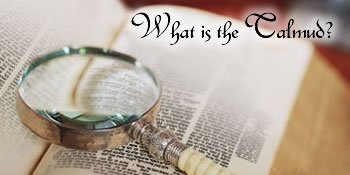
If the Bible is the cornerstone of Judaism, then the Talmud is the central pillar, soaring up from the foundations and supporting the entire spiritual and intellectual edifice. In many ways, the Talmud is the most important book in Jewish culture, the backbone of creativity and of national life. No other work has had a comparable influence on the theory and practice of Jewish life, shaping spiritual content and serving as a guide to conduct.
Formally, the Talmud is a 2,711-page summary of oral law organized in 37 Tractates, or masechtot. But in fact, the Talmud is much more than that: it is the repository of thousands of years of Jewish wisdom. It is an amalgam of law, legend, and philosophy, a blend of unique logic and shrewd pragmatism, of history and science, anecdotes and humor. The Talmud considers no subject to be too strange, too remote, or too bizarre to be studied.
The Talmud is a collection of paradoxes. Its framework is orderly and logical, yet it is based on free association. Its main objective is to interpret and comment on the book of law known as the Mishnah, yet it is a work of art that goes far beyond that.
The key to this work is in its name, "Talmud," which means study, learning, fulfilling the commandment of Talmud Torah (Torah study) - study that is its own end and reward. Yet the sages are not merely students and teachers - their very lives constitute Torah.
The entire Talmud is framed by questions and answers. It is, perhaps, the only sacred book in all of world culture that not only permits, but even encourages the student to question it. At the same time, the Talmud, like no other work, demands tremendous quantitative erudition on the part of those who study it.
According to Jewish tradition, the Oral Torah was given at Sinai together with the Written Law. For generations, the Oral Law was indeed studied and transmitted orally. The Mishnah is the first written summary of the Oral Law and was codified by Rav Yehuda Hanasi (Rabbi Judah the Prince) in the 2nd century CE.
Over the course of the next 300 years, scholars pored over the Mishnah and expounded upon it. The Gemara (also called Talmud in the more restricted sense of the term) is a compilation of their debates and commentaries on the Mishnah.
The discussions of the sages from Palestine are contained in the Jerusalem Talmud, which was edited by the disciples of Rabbi Yohanan in Tiberias in the 4th century CE. Its Diaspora counterpart, the Babylonian Talmud, was compiled by Rav Ashi and Ravina in the 5th century CE and is considered to be more extensive and authoritative.
The Mishnah and Gemara together comprise the Talmud.
Rabbi Adin Steinsaltz or Even Yisrael is a teacher, philosopher, social critic and prolific author who has been hailed by Time magazine as a "once-in-a-millennium scholar." More than two million copies of his Steinsaltz Talmud (Random House) have been sold worldwide. He has been a resident scholar at both Yale and Princeton, and in 1988 was awarded the Israel Prize, the country's highest honor.

